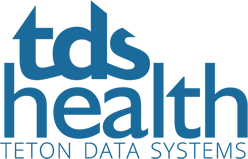Teaching Epidemiology: A guide for teachers in epidemiology, public health, and clinical medicine

Description
Teaching epidemiology requires skill and knowledge, combined with a clear teaching strategy and good pedagogic skills. The general advice is simple: if you are not an expert on a topic, try to enrich your background knowledge before you start teaching. The new edition of Teaching Epidemiology helps you to do this and, by providing world-expert teachers' advice on how best to structure teaching, providing a unique insight into what has worked in their hands. This book will help you to tailor your own epidemiology teaching program.
The fourth edition of this established text has been fully revised and updated, drawing on new research findings and recently developed methods including research technologies in genetic epidemiology and method development in relation to causal analysis. Analytical tools provide teachers in the field with the skills to guide students at both undergraduate and postgraduate levels. Each chapter in Teaching Epidemiology comprises key concepts in epidemiology, subject specific methodologies, and disease specific issues, to provide expert assistance in the teaching of a wide range of epidemiology courses.
Features:
- • Provides an introduction to recent experience and access to high-level expert advice.
- • A comprehensive guide for young and inexperienced teachers of epidemiology. It covers general methodology as well of more specialized topics related to diseases and health determinants.
- • Each chapter contains guidelines for how a course in the topic could be structured and how achievements could be evaluated. A list of key references is given for such chapters.
- • All the chapters are written by leading epidemiologists in their field, often with many years of teaching experience and different levels
Doody's Reviews
Quotes, Reviews or Testimonials
"This book is a useful starting point for nonexperts who are tasked with teaching an epidemiology course or unit. This book is unique in that it is aimed at instructors rather than students. Thus, it is not comprehensive and is more useful as an outline of the major components of each focus area in epidemiology."
-- Caitlin Smith, MS (University of Iowa College of Public Health) Doody's Review
Audience
The authors are subject-matter experts in their respective fields of epidemiology. The target audience, according to the authors, is nonexperts who are preparing to teach a course or unit in epidemiology. This audience is appropriately addressed. Each chapter addresses more specifically the intended students that the teacher will be teaching. Some chapters are written for graduate programs in epidemiology, while others are written for health professional programs.












